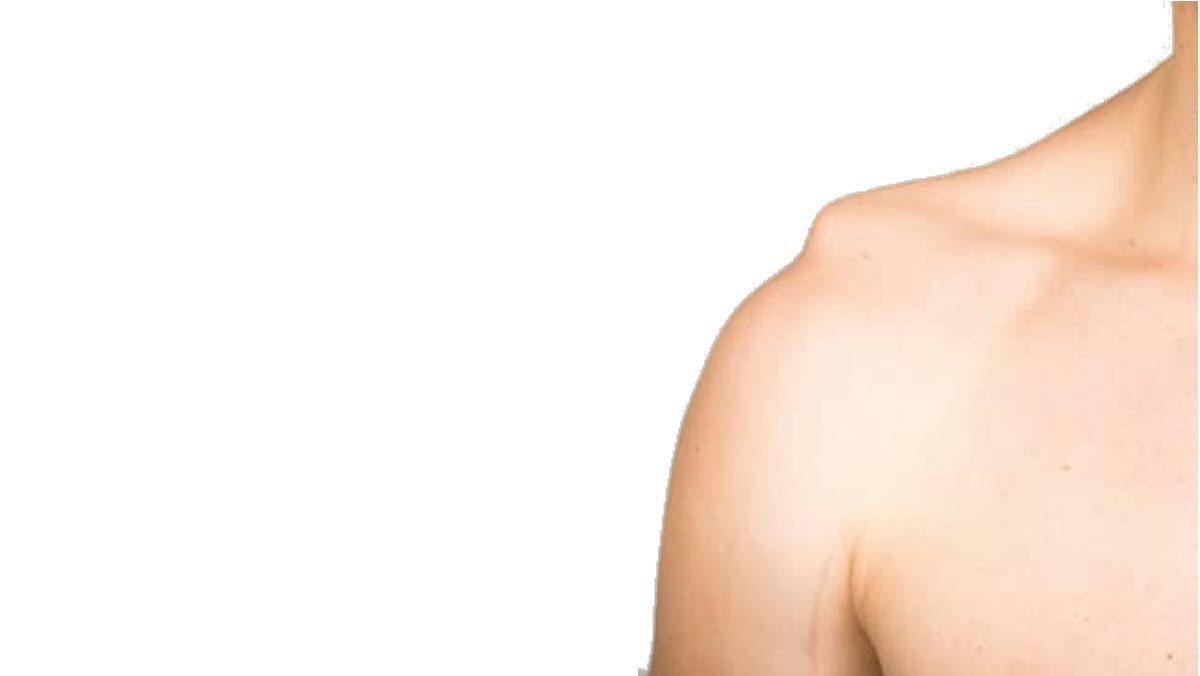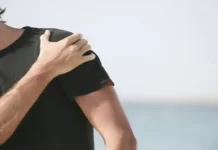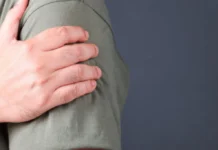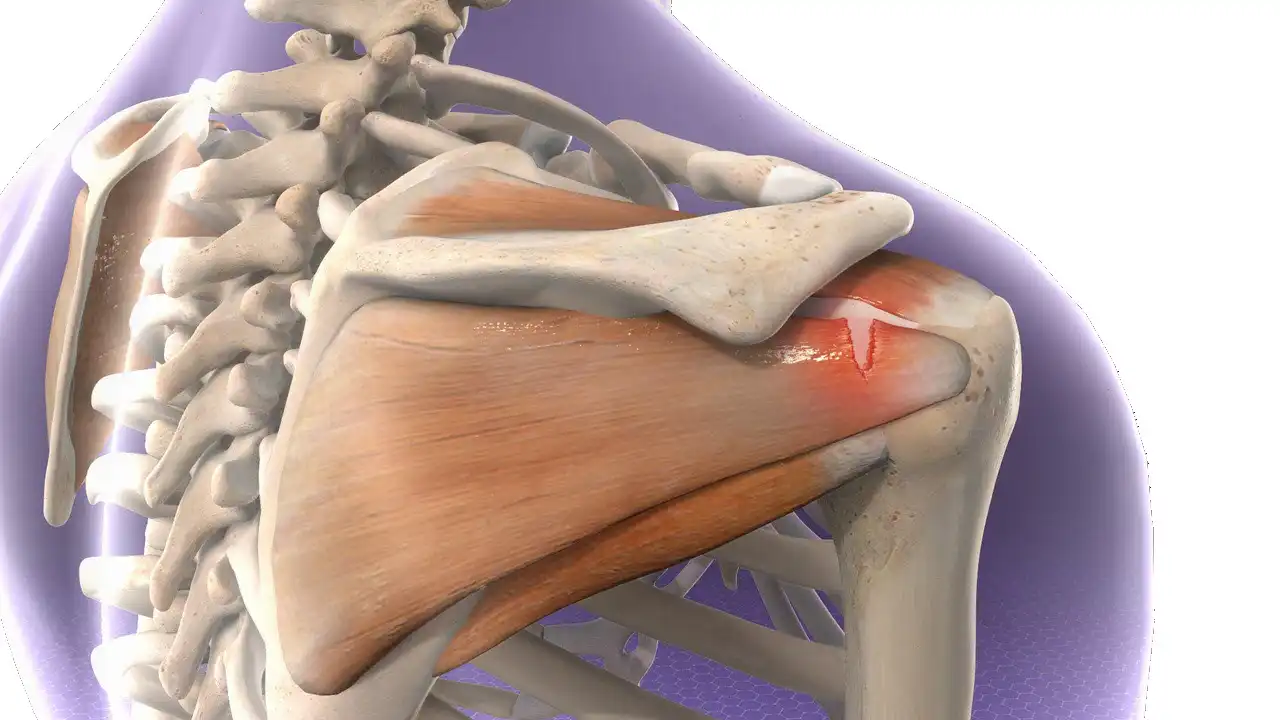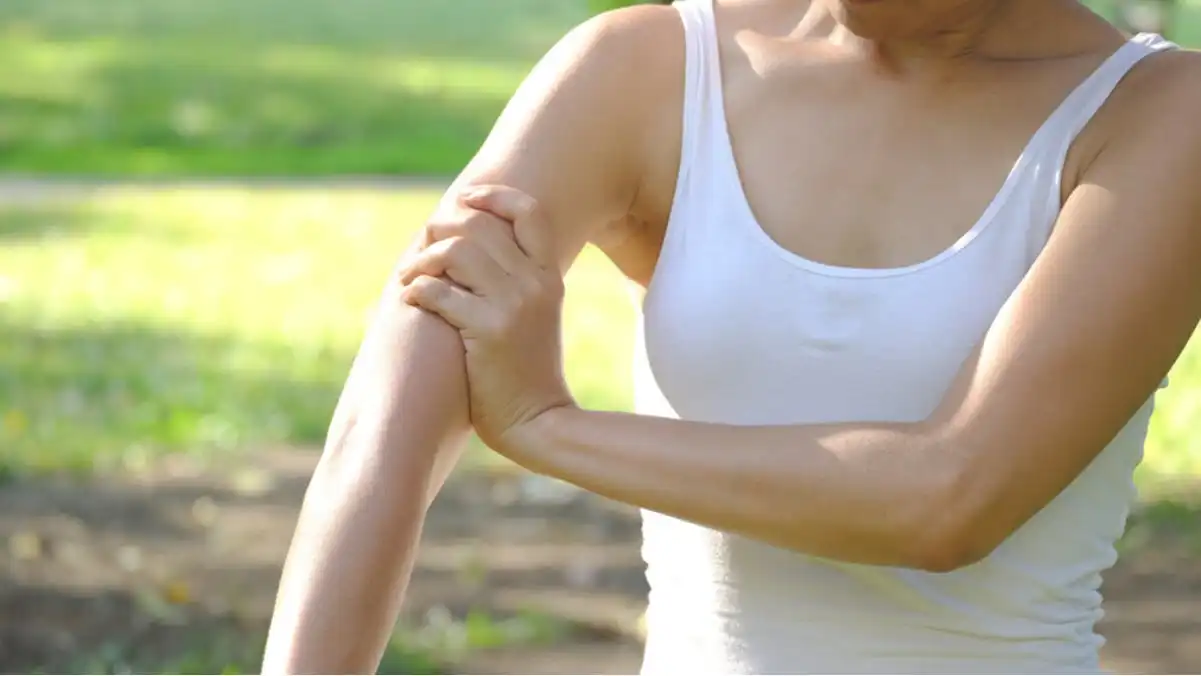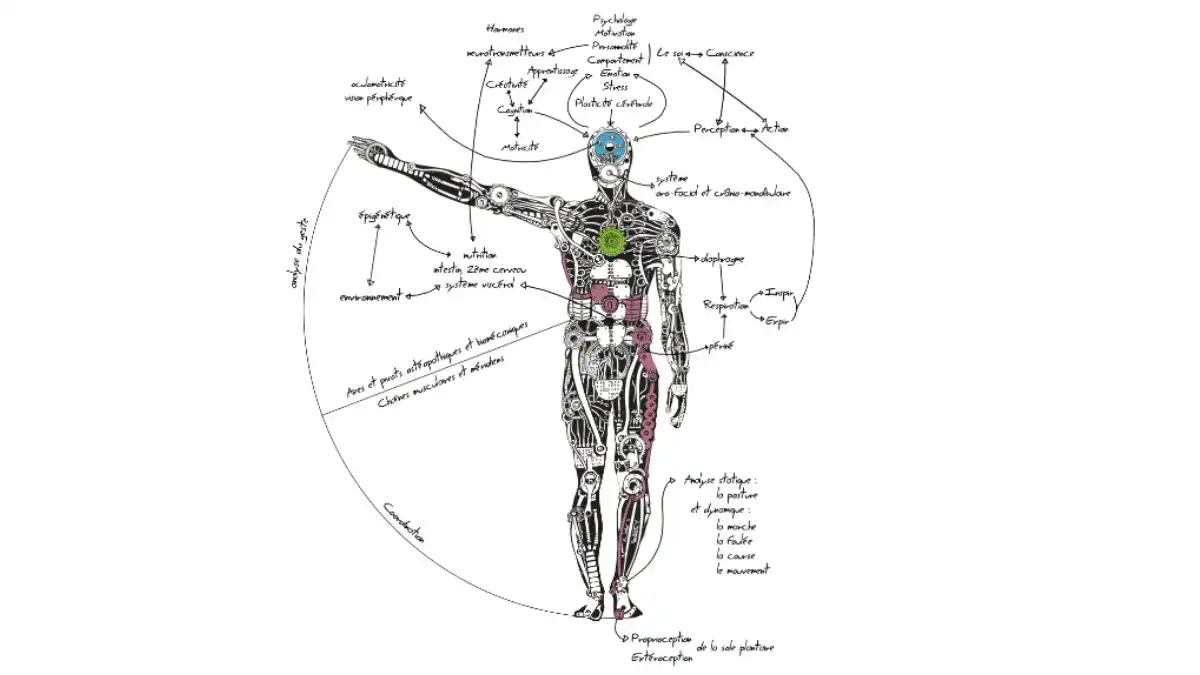Acromioclavicular (AC) injuries are often caused by a fall on the upper shoulder. A common example is a fall from a bicycle. Ligament rupture occurs to varying degrees when the acromion is driven into the ground.
- The acromioclavicular (AC) joint and coracoclavicular (CC) ligaments – connects the clavicle and scapula.
- An injury to the AC joint is a shoulder separation.
Types of AC joint injuries
The type of shoulder separation depends on the amount of tearing of the AC joint or the coracoclavicular (CC) ligaments that hold the joint in place.
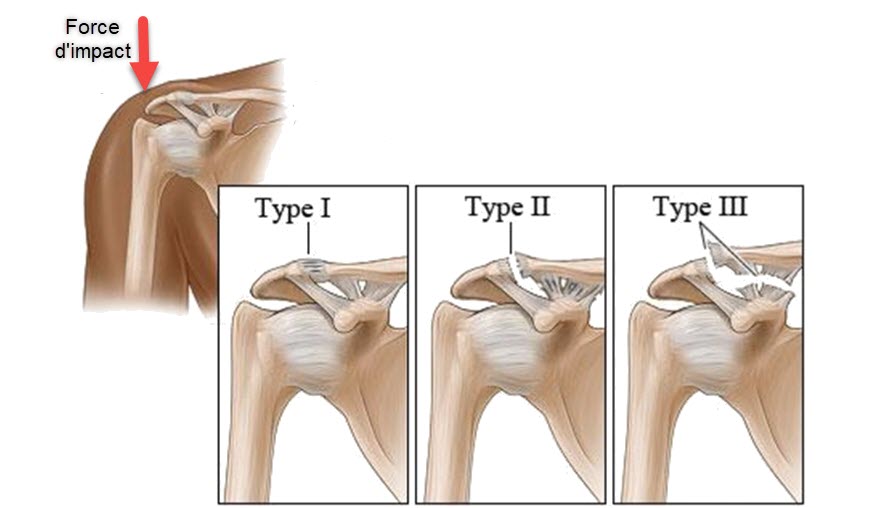
- Type I = the AC ligament is slightly torn, but the CC ligament is not damaged.
- Type II = the AC ligament is completely torn and there is little or no tear in the CC ligament.
- Type III = the AC and CC ligaments are completely torn. In this case, the clavicle separates from the tip of the scapula. Type IV, Type V, Type VI= uncommon. In these injuries, the periosteum of the clavicle and/or the deltoid and trapezoid muscles are also torn, causing significant malpositioning of the shoulder.
What causes acromioclavicular injury?
- Falling on the shoulder
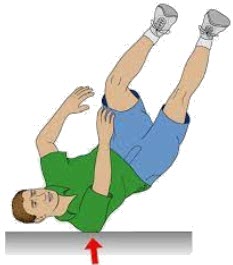
- Repeated lifting of heavy loads over the head
What are the symptoms of acromioclavicular injury?
- Pain in the arm or shoulder
- A lump, bruise or swelling of the shoulder, easily visible.
- Restriction of shoulder movement.
- Weakness in the arm or shoulder.
- Pain when lying on the affected side.
- When the shoulder is moved, a cracking sound is produced and felt.
What are the therapeutic approaches for the treatment of acromioclavicular injury?
Non-surgical treatment of Type I and II injuries consists of wearing a sling for a few days until the pain subsides. a sling for a few days until the pain subsides. Ice is helpful for the first 48 hours, and analgesics can be used to control severe pain. Patients can resume their daily activities if the pain allows, with full return to normal activities and sports within 4 weeks.

